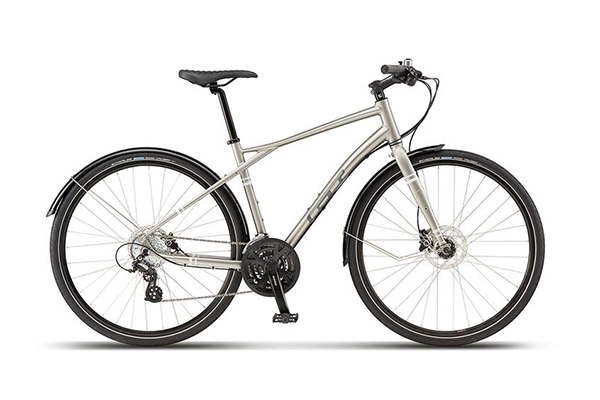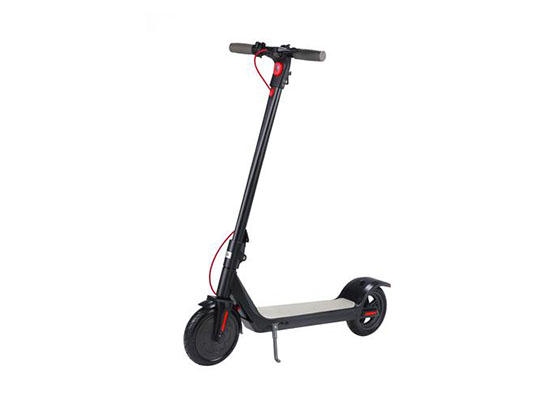In the world of automotive engineering, clutches play a crucial role in transferring power from the engine to the wheels. They enable smooth gear changes, control torque delivery, and enhance overall vehicle performance. When it comes to clutches, two popular options that often come up in discussions are slipper clutches and auto clutches. In this blog post, we’ll delve into the intricacies of these two types of clutches, exploring their mechanisms, applications, and the key differences between them. By the end, you’ll have a better understanding of which clutch type may be best suited for your specific needs.
Understanding Slipper Clutches
Slipper clutches, also known as back-torque limiting clutches, are primarily used in high-performance motorcycles and racing applications. These clutches are designed to mitigate the adverse effects of engine braking, particularly during aggressive downshifting. The slipper clutch mechanism allows the rear wheel to rotate at a different speed than the engine when the throttle is abruptly closed, preventing rear wheel lock-up and improving overall stability.
The functioning of a slipper clutch involves a set of specially designed clutch plates and ramps. When the engine torque tries to lock the rear wheel, the ramps in the slipper clutch assembly allow the clutch plates to disengage partially. This action reduces the engine braking effect and minimizes the chances of the rear wheel sliding or hopping. The slipper clutch thus enhances safety and control during rapid deceleration, especially in high-speed corners or challenging road conditions.
Auto Clutches: Simplicity and Convenience
Auto clutches, on the other hand, are designed to simplify the operation of the clutch, particularly for riders who prefer a more effortless and user-friendly experience. These clutches are commonly found in scooters, some entry-level motorcycles, and certain off-road vehicles. The primary purpose of an auto clutch is to eliminate the need for manual clutch control, making riding more accessible, especially for beginners or riders with physical limitations.
The functioning of an auto clutch involves a centrifugal mechanism that engages and disengages the clutch automatically based on engine speed. When the engine revs rise above a certain threshold, the clutch engages, allowing power transmission from the engine to the drivetrain. Conversely, when the engine speed drops below the engagement threshold, the clutch disengages, effectively separating the engine from the drivetrain and eliminating the need for manual clutch operation.
Key Differences between Slipper and Auto Clutches
Now that we have a basic understanding of slipper clutches and auto clutches, let’s explore the key differences between them.
Different Mechanisms and Designs:
Slipper Clutches: Slipper clutches incorporate complex mechanisms with ramps and clutch plates, allowing for controlled slippage and preventing rear wheel lock-up.
Auto Clutches: Auto clutches use a centrifugal mechanism that automatically engages and disengages the clutch based on engine speed, eliminating the need for manual clutch control.
Performance Characteristics:
Slipper Clutches: Slipper clutches primarily enhance vehicle stability and control during aggressive downshifting, minimizing the rear wheel’s tendency to lock up under heavy engine braking.
Auto Clutches: Auto clutches offer simplicity and convenience, particularly for riders who prefer not to use manual clutch control, making them suitable for beginners or riders seeking an effortless riding experience.
Intended Applications and Usage Scenarios:
Slipper Clutches: Slipper clutches are commonly used in high-performance motorcycles, racing bikes, and applications where precise control during aggressive downshifting is paramount.
Auto Clutches: Auto clutches find their place in scooters, entry-level motorcycles, and certain off-road vehicles, catering to riders who prioritize ease of use and convenience over manual clutch control. They are particularly useful in urban commuting and stop-and-go traffic situations.
Pros and Cons of Slipper Clutches
Slipper clutches offer several advantages that make them a popular choice among performance-oriented riders. Some benefits include improved stability, reduced rear wheel hop, and enhanced control during aggressive downshifting. Slipper clutches can also prolong the lifespan of the drivetrain components by reducing stress on them. However, slipper clutches may come with a higher price tag and require periodic maintenance to ensure optimal performance. Additionally, the engagement and disengagement characteristics of slipper clutches may take some time for riders to get accustomed to.
Pros and Cons of Auto Clutches
Auto clutches, with their simplified operation and automatic engagement, offer ease of use and convenience. They eliminate the need for manual clutch control, making them suitable for beginners or riders with physical limitations. Auto clutches can make riding in heavy traffic or navigating tricky off-road terrains less tiring and demanding. They also provide smoother starts and stops, reducing the chances of stalling the engine. However, some riders may feel a loss of control or a disconnection from the vehicle due to the lack of manual clutch engagement. Auto clutches may not be as suitable for performance-oriented riding or situations that require precise clutch control.
Factors to Consider When Choosing Between Slipper and Auto Clutches
When deciding between slipper and auto clutches, several factors should be taken into account:
Riding Style and Preferences: Consider your riding style, whether it involves aggressive downshifting and high-speed maneuvers or relaxed cruising. Assess your comfort level with manual clutch control and the importance you place on having precise control over the clutch engagement.
Vehicle Type and Usage: Different vehicles have different requirements. Consider the type of vehicle you own or plan to purchase, its intended use, and whether it aligns with the characteristics offered by slipper clutches or auto clutches.
Budget Considerations: Slipper clutches, with their complex mechanisms and performance-oriented nature, tend to be more expensive than auto clutches. Evaluate your budget and determine if the benefits offered by a slipper clutch justify the additional cost.
I. FAQs about Slipper Clutches
What is the purpose of a slipper clutch?
A slipper clutch serves two primary purposes: preventing rear wheel lock-up during aggressive downshifting and reducing the impact of engine braking. It achieves this by allowing controlled slippage between the clutch plates when the throttle is closed abruptly.
How does a slipper clutch prevent rear wheel lock-up?
When the throttle is closed rapidly, the slipper clutch’s mechanism allows the clutch plates to partially disengage. This action allows the rear wheel to rotate at a different speed than the engine, preventing it from locking up and reducing the chances of the bike sliding or hopping.
Are slipper clutches only used in high-performance motorcycles?
Slipper clutches are commonly found in high-performance motorcycles and racing bikes. However, they are also used in some sporty street motorcycles and certain performance-oriented vehicles where precise control during aggressive downshifting is desired.
Can a slipper clutch improve my riding experience?
Yes, a slipper clutch can enhance your riding experience, especially in situations that involve aggressive downshifting or riding on challenging terrains. It provides better stability, improved control, and reduces the chances of the rear wheel losing traction during rapid deceleration.
Do slipper clutches require any special maintenance or adjustments?
Slipper clutches generally require regular maintenance like any other clutch system. It is recommended to follow the manufacturer’s guidelines regarding maintenance intervals and procedures. This may include inspecting the clutch plates, ensuring proper lubrication, and adjusting the clutch engagement as necessary.
II. FAQs about Auto Clutches
What is the benefit of an auto clutch?
The primary benefit of an auto clutch is the elimination of manual clutch control. It simplifies the riding experience, particularly for beginners or riders who prefer not to deal with manual clutch engagement. It allows for smoother starts, stops, and gear changes without the need for manual clutch manipulation.
How does an auto clutch make riding easier?
Auto clutches utilize a centrifugal mechanism that automatically engages and disengages the clutch based on engine speed. This means the rider does not have to manually operate the clutch lever. The clutch engages when the engine reaches a certain speed, and it disengages when the engine speed drops below that threshold, making riding easier and less demanding.
Are auto clutches suitable for all types of vehicles?
Auto clutches are commonly found in scooters, some entry-level motorcycles, and certain off-road vehicles. They are generally designed for urban commuting, low-speed riding, and situations where ease of use and convenience are prioritized. However, they may not be suitable for high-performance applications or situations that require precise clutch control.
Can an auto clutch be retrofitted into an existing manual transmission?
Retrofitting an auto clutch into an existing manual transmission may not be a straightforward process. Auto clutches are typically designed and integrated into the transmission system from the manufacturing stage. Converting a manual clutch system to an auto clutch system would require significant modifications and potentially involve compatibility issues with other components.
Do auto clutches affect the fuel efficiency of a vehicle?
Auto clutches have minimal impact on fuel efficiency. In fact, their automatic engagement and disengagement mechanisms can potentially optimize fuel consumption by ensuring the clutch is only engaged when necessary. However, the overall impact on fuel efficiency would depend on various factors such as riding conditions, vehicle design, and individual riding habits.
Conclusion
Slipper clutches and auto clutches serve different purposes and cater to distinct needs. Slipper clutches are designed to enhance stability and control during aggressive downshifting, primarily found in high-performance motorcycles and racing applications. Auto clutches, on the other hand, provide simplicity and convenience by eliminating the need for manual clutch control, making them suitable for beginners or riders seeking an effortless riding experience.
Consider your riding style, vehicle type, and personal preferences when deciding between slipper and auto clutches. Both options have their merits and considerations, and it’s important to choose the clutch type that aligns with your specific requirements. Remember, the ultimate goal is to enhance your riding experience and ensure the clutch’s functionality supports your desired level of control and convenience.




